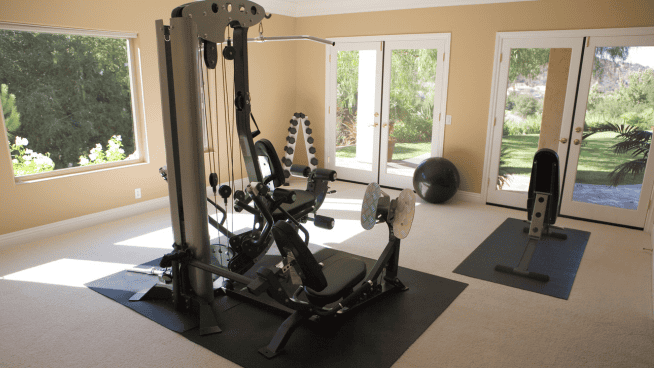3 Unbreakable Plyometric Training Rules
Plyometrics are the fastest way to turn the strength you build in the weight room into speed and explosiveness on the field. They’re also incredibly easy to screw up if you’re not careful.
One key is to understand how often to use plyometrics in your workouts.
If you haphazardly add plyos to your routine, you run the risk of turning your plyo exercises into conditioning drills, which are physically challenging but won’t build explosive power—the sole purpose of plyos. Worse, you could cause an injury that prevents you from training and playing your sport.
That’s why properly designed plyometrics programs are carefully structured to challenge the muscles without putting too much stress on the body too quickly. Quality is always emphasized over quantity.
To get the most out of your plyo workouts, follow these three unbreakable plyometric training rules:
Rule 1: Don’t do plyos every day

Plyometrics were originally referred to by their creator, Dr. Yuri Verkhoshansky, as the “Shock Method.” The movements, such as Depth Jumps, involved a rapid deceleration and subsequent explosive movement—often some type of jump.
This “shock”—or stress—improves the stretch-shortening cycle (SSC), a three-step process in which the muscles slow down the body’s momentum, hold on to the energy from landing for a tiny fraction of a second, and convert that energy into forceful movement.
By focusing on spending little time in transition and moving explosively, plyos improve the efficiency of the SSC so it’s able to more quickly store and release force—a key quality of athleticism.
But let’s go back to the word “stress.” Place just the right amount of stress on your body and it will adapt to handle it in a fashion similar to lifting heavy weights to increase your strength. Place too much stress on your body and you will see limited training gains—and you may suffer an overuse injury, which occurs when you make your muscles and tendons work too hard for too long.
Your body needs between 48 and 72 hours to recover after a plyo workout. This allows your muscles to repair themselves and become more powerful, and it reduces the risk of overuse injuries from too much impact.
With this in mind, we recommend performing no more than three plyo workouts per week to make sure you don’t do too many reps and that you have sufficient recovery time between training sessions.
Rule 2: Limit your total reps

Plyos are measured in “touches”—basically another word for reps, or the number of times your feet contact the ground. The total number of touches an athlete should get during a workout depends on several factors, including his or her size (height and weight) and training level (experienced or newbie). Generally speaking, a heavier athlete should get fewer touches (perform fewer reps) than a light athlete, and a veteran athlete can handle more touches than a beginner.
A typical workout should include between 75 and 150 touches, a range that should be safe for nearly all athletes. In fact, a 2008 study found that athletes who performed a low or moderate volume of plyometrics per week experienced greater improvements in speed and explosiveness than those who did a high volume.
That’s because plyometrics must be performed quickly with maximum power and speed. You achieve this by performing 3 to 6 sets of 3 to 8 powerful and clean reps. The exact numbers depend on the type of exercise and where you are in your training.
Once again, less is more.
Rule 3: Take enough rest between sets

The number 1 problem with plyos is the tendency to turn them into conditioning workouts, which are designed to make you tired—the exact opposite of what you should be doing during a plyometric workout.
The whole point of plyos is to perform every rep quickly and powerfully. If you’re not doing that, you’re not making improvements in your stretch-shortening cycle—and you might as well just do cardio. The only way to build explosiveness is to allow your body to fully recover between sets.
But rest is for the weak, right? Not so when it comes to plyos.
The ideal recovery time is 3 to 5 times longer than the duration of your set. Take too short a rest and the exercise no longer develops the SSC. Take too long a rest and you’re just wasting your time.
Depending on the exercise, the rest period should be from 30 to 60 seconds. Where you fall on this scale depends on whether you feel ready to go for the next set. Sometimes you may need an even longer rest when performing an advanced exercise on the higher end of the rep scale.
[ctaimage group=”plyooffer” /]
RECOMMENDED FOR YOU
MOST POPULAR
3 Unbreakable Plyometric Training Rules
Plyometrics are the fastest way to turn the strength you build in the weight room into speed and explosiveness on the field. They’re also incredibly easy to screw up if you’re not careful.
One key is to understand how often to use plyometrics in your workouts.
If you haphazardly add plyos to your routine, you run the risk of turning your plyo exercises into conditioning drills, which are physically challenging but won’t build explosive power—the sole purpose of plyos. Worse, you could cause an injury that prevents you from training and playing your sport.
That’s why properly designed plyometrics programs are carefully structured to challenge the muscles without putting too much stress on the body too quickly. Quality is always emphasized over quantity.
To get the most out of your plyo workouts, follow these three unbreakable plyometric training rules:
Rule 1: Don’t do plyos every day

Plyometrics were originally referred to by their creator, Dr. Yuri Verkhoshansky, as the “Shock Method.” The movements, such as Depth Jumps, involved a rapid deceleration and subsequent explosive movement—often some type of jump.
This “shock”—or stress—improves the stretch-shortening cycle (SSC), a three-step process in which the muscles slow down the body’s momentum, hold on to the energy from landing for a tiny fraction of a second, and convert that energy into forceful movement.
By focusing on spending little time in transition and moving explosively, plyos improve the efficiency of the SSC so it’s able to more quickly store and release force—a key quality of athleticism.
But let’s go back to the word “stress.” Place just the right amount of stress on your body and it will adapt to handle it in a fashion similar to lifting heavy weights to increase your strength. Place too much stress on your body and you will see limited training gains—and you may suffer an overuse injury, which occurs when you make your muscles and tendons work too hard for too long.
Your body needs between 48 and 72 hours to recover after a plyo workout. This allows your muscles to repair themselves and become more powerful, and it reduces the risk of overuse injuries from too much impact.
With this in mind, we recommend performing no more than three plyo workouts per week to make sure you don’t do too many reps and that you have sufficient recovery time between training sessions.
Rule 2: Limit your total reps

Plyos are measured in “touches”—basically another word for reps, or the number of times your feet contact the ground. The total number of touches an athlete should get during a workout depends on several factors, including his or her size (height and weight) and training level (experienced or newbie). Generally speaking, a heavier athlete should get fewer touches (perform fewer reps) than a light athlete, and a veteran athlete can handle more touches than a beginner.
A typical workout should include between 75 and 150 touches, a range that should be safe for nearly all athletes. In fact, a 2008 study found that athletes who performed a low or moderate volume of plyometrics per week experienced greater improvements in speed and explosiveness than those who did a high volume.
That’s because plyometrics must be performed quickly with maximum power and speed. You achieve this by performing 3 to 6 sets of 3 to 8 powerful and clean reps. The exact numbers depend on the type of exercise and where you are in your training.
Once again, less is more.
Rule 3: Take enough rest between sets

The number 1 problem with plyos is the tendency to turn them into conditioning workouts, which are designed to make you tired—the exact opposite of what you should be doing during a plyometric workout.
The whole point of plyos is to perform every rep quickly and powerfully. If you’re not doing that, you’re not making improvements in your stretch-shortening cycle—and you might as well just do cardio. The only way to build explosiveness is to allow your body to fully recover between sets.
But rest is for the weak, right? Not so when it comes to plyos.
The ideal recovery time is 3 to 5 times longer than the duration of your set. Take too short a rest and the exercise no longer develops the SSC. Take too long a rest and you’re just wasting your time.
Depending on the exercise, the rest period should be from 30 to 60 seconds. Where you fall on this scale depends on whether you feel ready to go for the next set. Sometimes you may need an even longer rest when performing an advanced exercise on the higher end of the rep scale.
[ctaimage group=”plyooffer” /]










